Videos:
Peacock Courtship
Red-capped Manakin Courtship
Bird-of-Paradise Courtship:
http://www.youtube.com/watch?v=W7QZnwKqopo
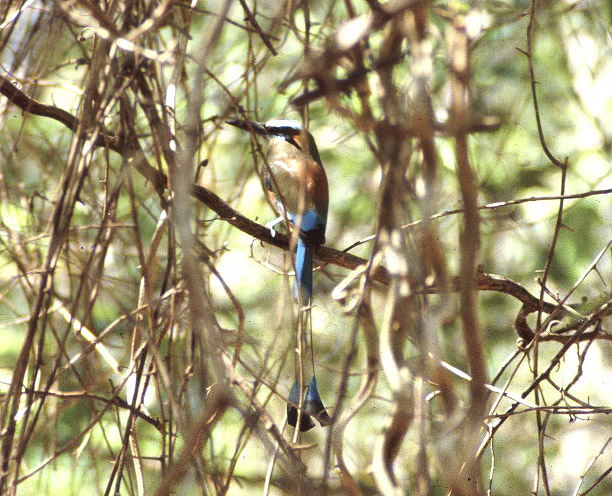
Motmot, Palo Verde, Costa Rica,
April, 1985. © James Adams, 1985
The male (pictured here) uses the
feathered sections at the end of the tail as an attractant for females. It
will cock
them side to side (see image below) to provide a more obvious
signal to the females.
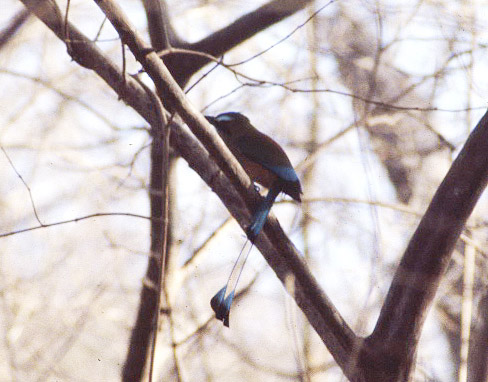
Male Motmot, with tailed cocked, Palo Verde, Costa Rica, April
1985.
© James Adams, 1985
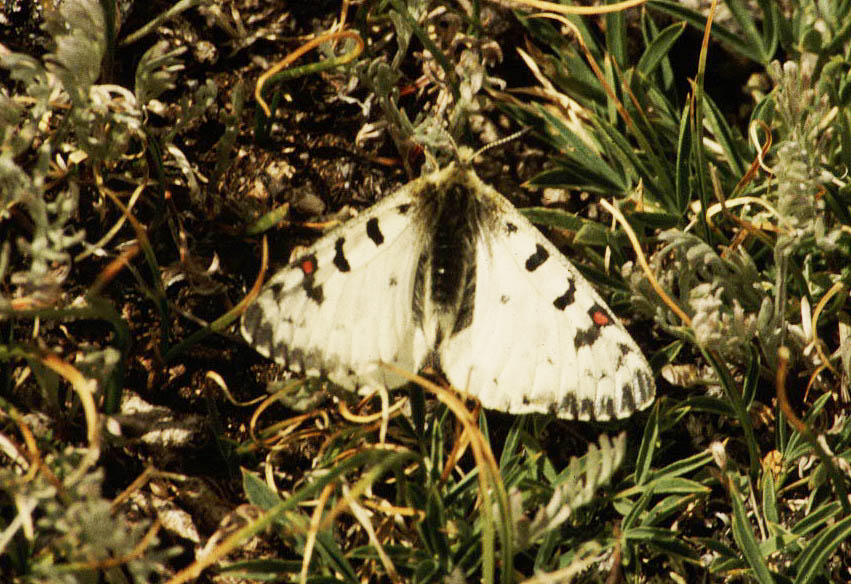
Parnassius butterfly, Rocky Mountain National Park, Colorado
© James Adams, 2003. The
males of members of this genus
place a sphragis on the female after they mate
(see below). This prevents other males from mating with the female, so the
male has complete
sperm precedence, fathering almost all of the eggs of the
mated female. This is, in essence, a "chastity belt".
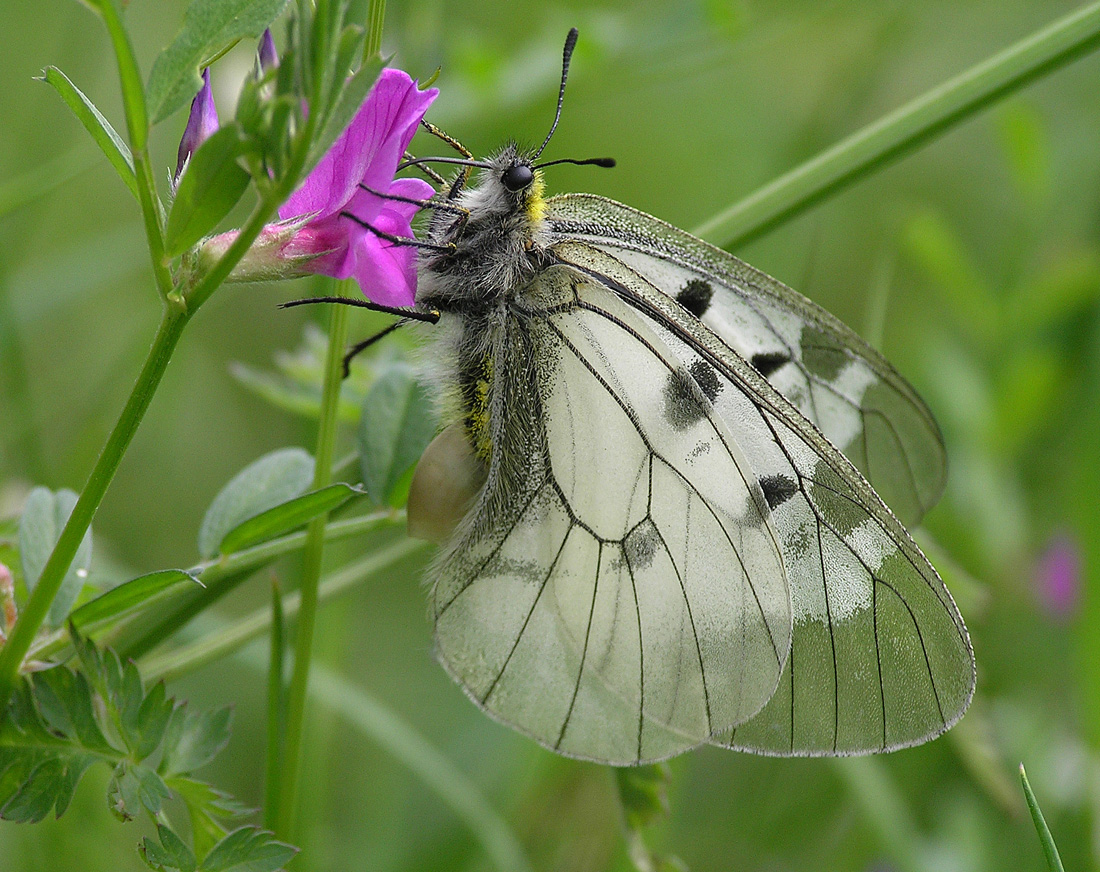
Female Parnassius mnemosyne, with sphragis plugging mating passageway.
Just so you know
butterflies mate and lay eggs through different openings, so she can still lay
eggs!!
© Lars Andersen, 2009
The sphragis may actually break down over time,
though it takes a while. So another male might mate with her, but by that
point, she may be "old"
and have few eggs left to fertilize.
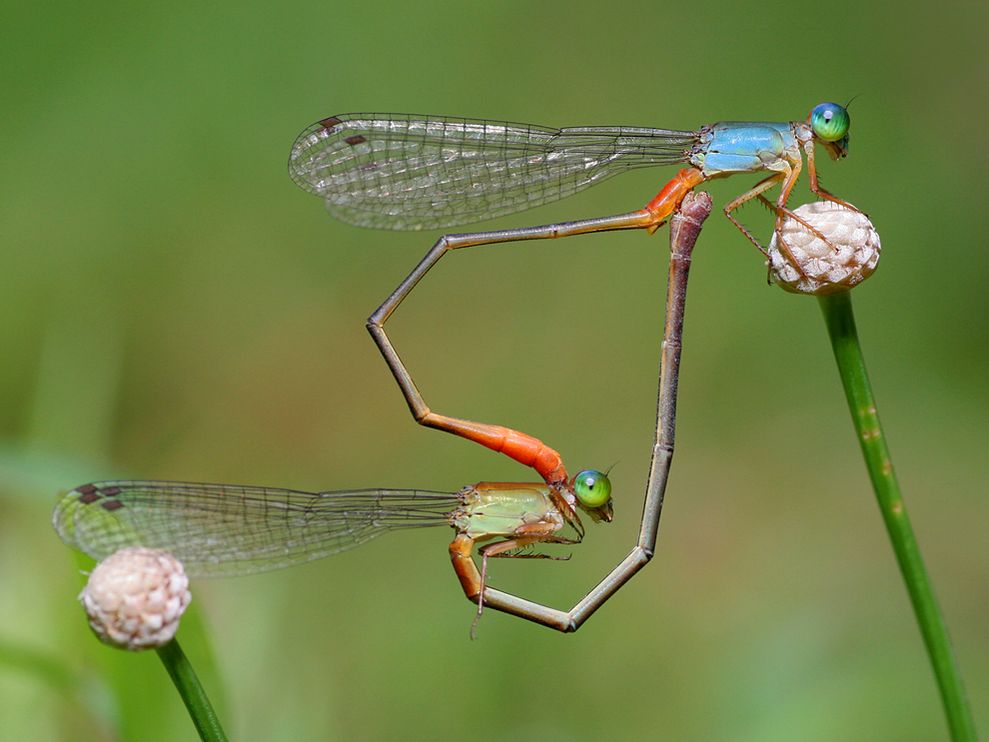
Damselflies, male above, female below. Male deposits own spermatophore in
pouch on the underside
of
the second/third abdominal segments (orange in this species); convinces female
to mate and uses
claspers at
end of abdomen to grab her behind her head; she then reaches forward with the
end of her
abdomen to
retrieve the spermatophore. This is a roundabout way of mating to say the
least.
If you ever DO see a male damselfly apparently mating the "normal" way (end of
abdomen to end of
abdomen,
then that male is actually scooping out the previous male's spermatophore.
©animals.nationalgeographic.com
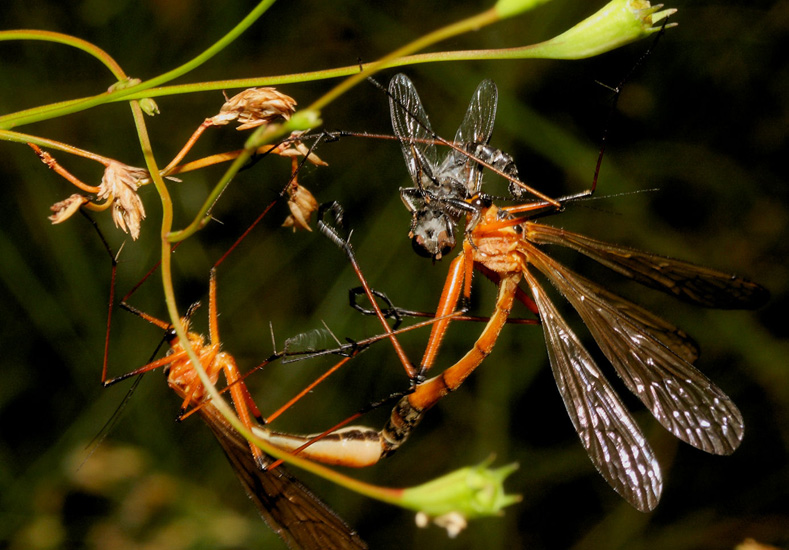
Hangingflies mating;
https://www.whatsthatbug.com/2010/11/16/hangingflies-from-australia-courting-and-mating/
This image shows the female feeding on a rather large fly that the male used to
attract the female to mate.
The larger the prey item offered to the female,
the longer they may mate (as she feeds, providing nutrition to her
eggs).
This allows the male to monopolize the female for the mating time, and give his
sperm a head start on
fertilizing her eggs. Large males tend to be
able to obtain larger prey items, though some species steal prey
items from
spider webs. As such, large males tend to have an advantage, which is
appropriate because this is
an indicator of their actual fitness.
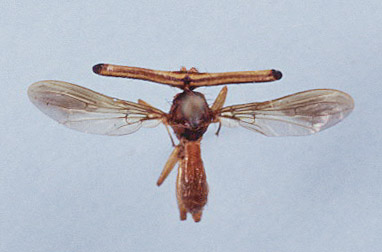
Stalk-eyed fly, La Selva, Costa Rica, March , 1985.
© James Adams, 1997
Females of
stalk-eyed flies have selected for males to have long eye-stalks;
apparently,
being able to get resources to build these stalks is an indicator
of the
fitness of the individual males.



